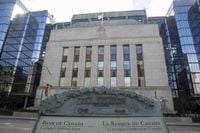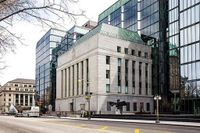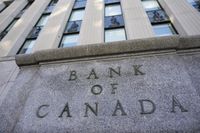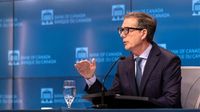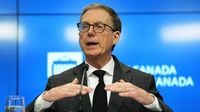On April 16, 2025, the Bank of Canada announced it was maintaining the target for the overnight rate at 2.75%. This decision marks a significant pause after a series of seven consecutive rate cuts since June 2024, reflecting the complex economic landscape shaped by ongoing trade tensions, particularly with the United States.
Governor Tiff Macklem emphasized that the radical and protectionist shift in U.S. trade policy has exacerbated uncertainty, disrupted financial markets, and moderated global growth prospects while raising inflation expectations. "The future is not clearer," Macklem stated, highlighting the unpredictable nature of tariffs and their potential duration. The Bank's decision to hold rates steady comes as it grapples with the dual pressures of inflation and economic growth amidst a volatile trade environment.
The Bank of Canada's April Monetary Policy Report outlines two potential scenarios regarding U.S. trade policy. In the first scenario, high uncertainty persists, but the scope of tariffs remains limited, resulting in a temporary weakening of growth in Canada, with inflation stabilizing around the target of 2%. Conversely, the second scenario forecasts a prolonged trade war, potentially plunging the Canadian economy into a recession in 2025, with inflation rising above 3% in 2026.
Despite a solid global economy at the end of 2024, the recent escalation of tariffs has clouded the outlook. The U.S. economy is showing signs of slowing, with declining confidence among consumers and businesses, while inflation expectations have increased. In the Eurozone, growth has been modest, hampered by weaknesses in the manufacturing sector, and China has recently reported a slight economic slowdown.
Financial markets have faced significant disruptions due to ongoing tariff announcements and the uncertainty surrounding them. Oil prices have decreased considerably since January, influenced largely by deteriorating global growth prospects, which in turn has contributed to a recent appreciation of the Canadian dollar against the U.S. dollar.
In Canada, the economic landscape reflects signs of slowing growth. Consumer confidence has been impacted by tariff announcements, leading to decreased consumption, residential investment, and business spending in the first quarter of 2025. The labor market is also feeling the strain, with employment levels dropping in March and businesses indicating they plan to hire less. Wage growth continues to show signs of moderation, further complicating the economic picture.
Inflation in Canada was reported at 2.3% in March, lower than February's figures but still above the 1.8% observed in January. The stronger inflation in recent months has been attributed to a rebound in goods prices and the conclusion of the GST and HST holiday. Starting in April, inflation measured by the Consumer Price Index is expected to be pulled down due to the withdrawal of the carbon tax for consumers, which is projected to reduce inflation by 0.7 percentage points over the next year. However, the potential for rising prices due to tariffs and supply chain disruptions remains a concern.
The Bank of Canada has committed to exercising caution in its future rate-setting decisions, monitoring various factors that could influence the economy. These include the extent to which higher tariffs will lower demand for Canadian exports, the impact on business investment and household spending, and how quickly cost increases will be passed on to consumers. The central bank reiterated that it cannot resolve uncertainties related to trade or neutralize the repercussions of a trade war but aims to maintain price stability for Canadians.
As the economic landscape continues to evolve, the next date for setting the target for the overnight rate is scheduled for June 4, 2025. Economists and market analysts will be closely watching how the situation unfolds, particularly regarding U.S. trade policies and their implications for the Canadian economy.
In summary, the Bank of Canada’s decision to maintain the overnight rate at 2.75% reflects a cautious approach in light of significant uncertainties surrounding global trade. With inflation expectations rising and economic growth prospects uncertain, the central bank is navigating a complex landscape as it strives to balance the dual pressures of inflation and economic stability.
